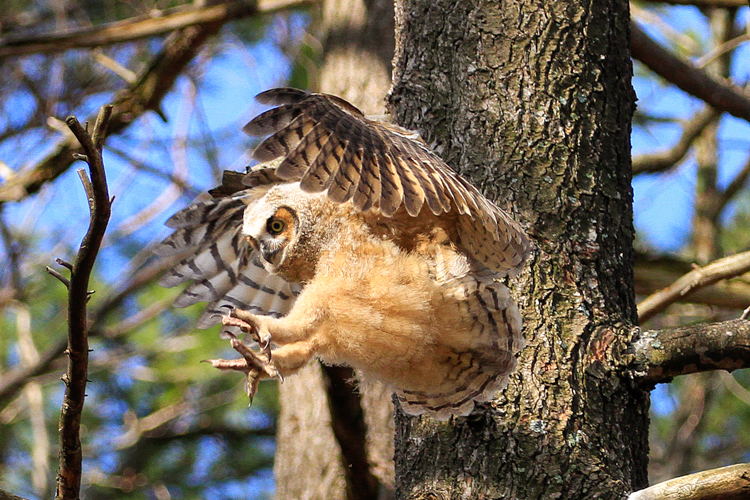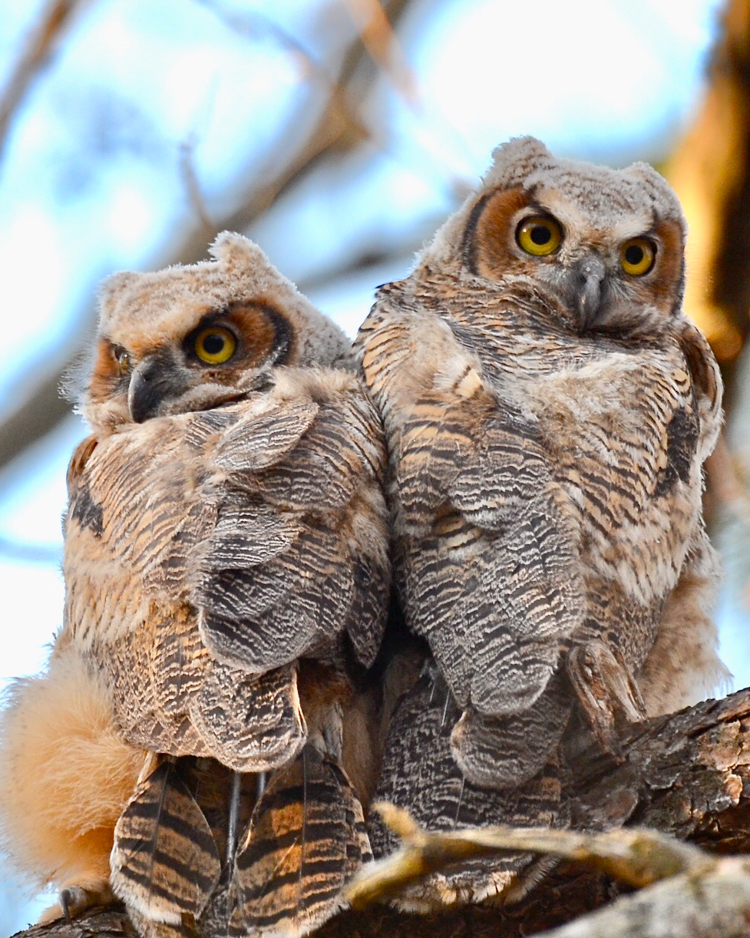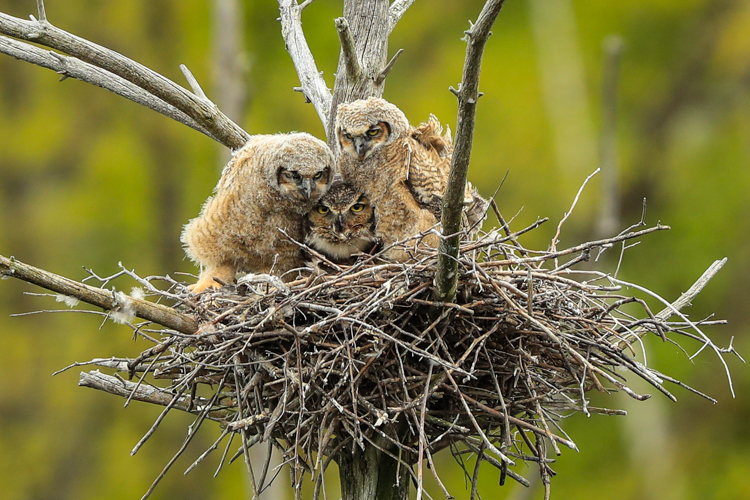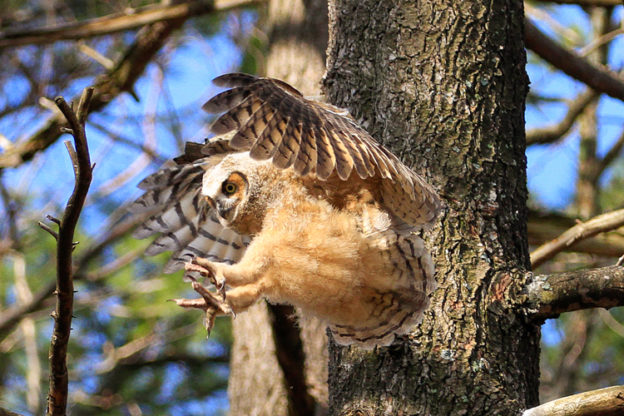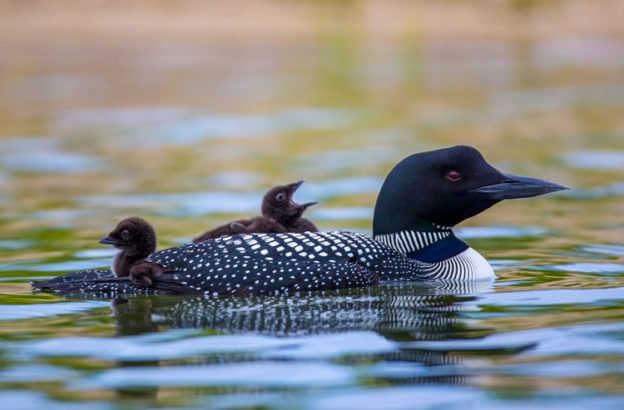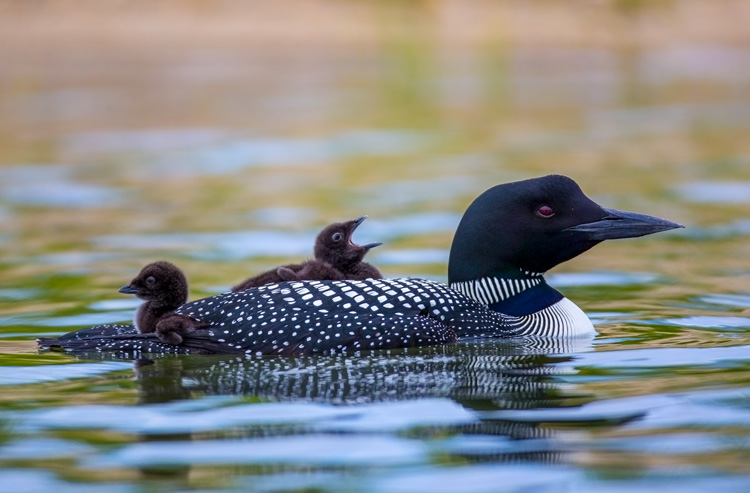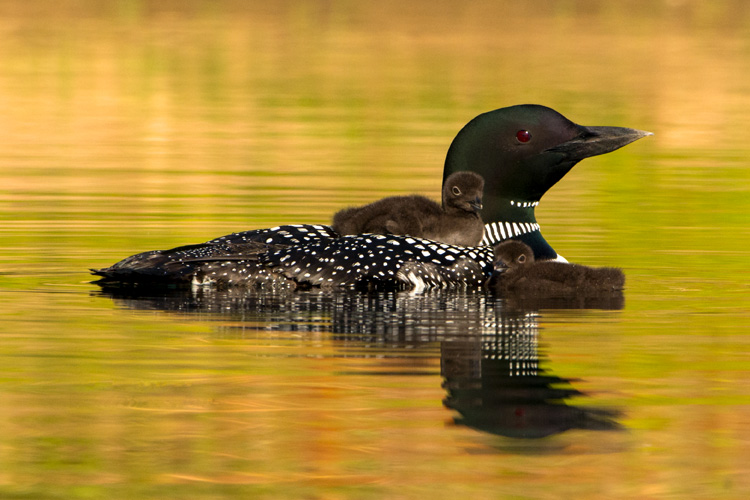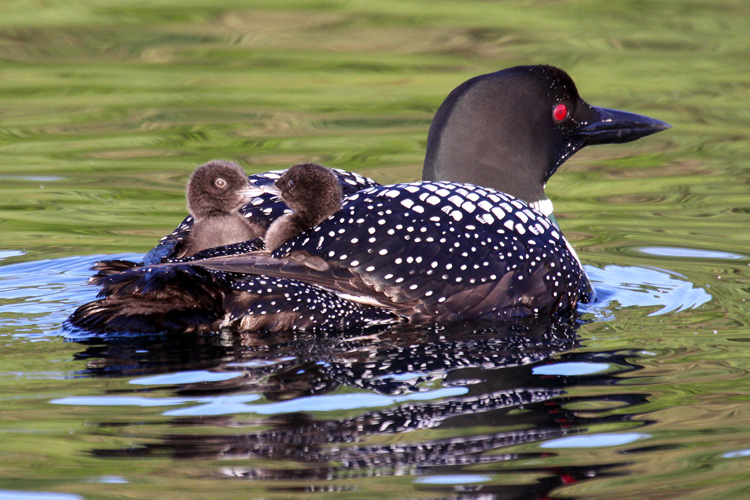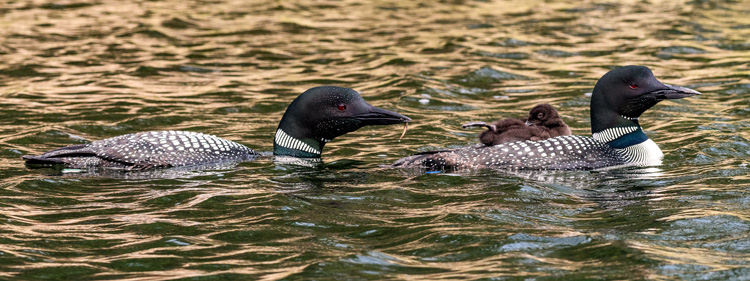Great Horned Owls are one of the earliest birds to breed in Massachusetts, with courtship beginning as early as December. They are not cavity nesters, but use old Red-tailed Hawk or Great Blue Heron nests, often at the top of dead tree snags. With a little luck, you may be able to spot the still-downy heads of fledglings sticking up over the edges of these large nests.
Around six weeks of age, baby Great Horned Owls begin to venture out of the nest onto nearby branches, a behavior called (appropriately) “branching.” Because their wings are not yet fully developed, they use their talons to grip branches and move around.
After another week or so, their wings and confidence have strengthened enough to try out a few awkward test flights, but they usually bungle it more often than they succeed in the beginning. This can lead to some comical situations with confused, panicky youngsters finding themselves hanging upside down from tree branches or even on the ground, sharply clacking their bills and wearing a bewildered expression. Appearances to the contrary, they are perfectly fine and will return to the safety of their nests after a brief period of recovery.
So if you come across a fluffy fledgling looking a bit disgruntled on the ground, there’s no need to worry—the parents are almost certainly nearby keeping a watchful, stoic eye while their little ones blunder their way through adolescence. Keep a respectful distance to ensure you don’t inadvertently cause them further stress, and enjoy a quiet chuckle of commiseration—after all, who hasn’t been through an awkward growth spurt or two?
Enjoy these five photos of Great Horned Owlets from our annual Picture This: Your Great Outdoors photo contest. The 2021 contest will be opening in early June, so get your cameras ready and get outdoors!

